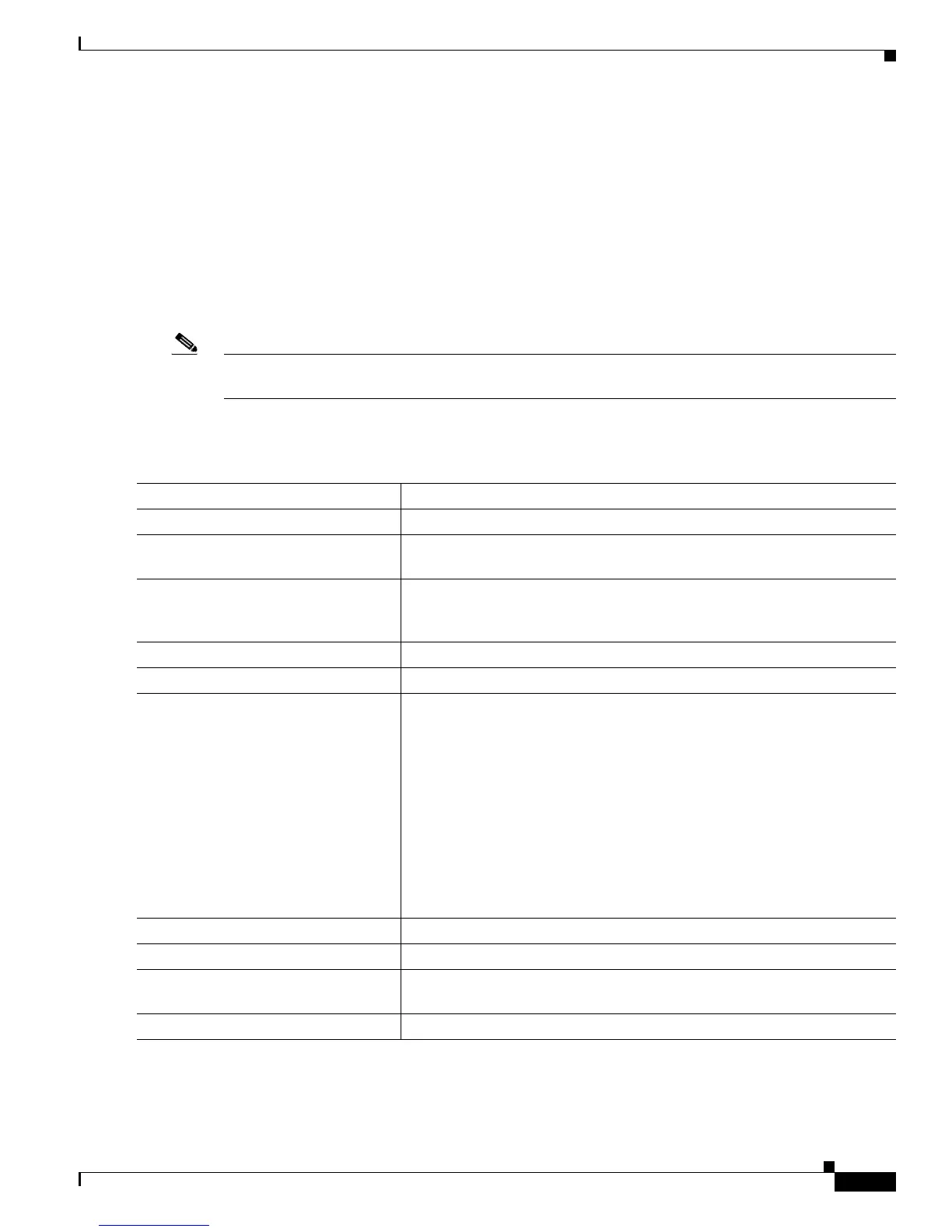35-75
Cisco ME 3400 Ethernet Access Switch Software Configuration Guide
OL-9639-07
Chapter 35 Configuring IP Unicast Routing
Configuring BFD
In HSRP BFD, standby BFD is enabled globally by default and on all interfaces. If you disable it on an
interface, you then must disable and reenable it globally for BFD sessions to be active.
When using BFD echo mode (the default), you should disable sending of ICMP redirect messages by
entering the no ip redirects interface configuration command on the BFD interface.
Configuring BFD Session Parameters on an Interface
Before you can start a BFD session on an interface, you must put the interface into Layer 3 mode and
set the baseline BFD parameters on it.
Note Although you can configure BFD on Layer 2 interfaces, a BFD session cannot start until both interfaces
are in Layer 3 mode and routing is enabled on the switch.
Beginning in privileged EXEC mode, follow these steps to configure BFD parameters on any interface
participating in a BFD session:
To remove the BFD parameter configuration, enter the no bfd interval interface configuration
command.
Command Purpose
Step 1
configure terminal Enter global configuration mode.
Step 2
interface interface-id Specify an interface for a BFD session, and enter interface configuration
mode. Only physical interfaces support BFD.
Step 3
no shutdown Enable the interface if necessary. User network interfaces (UNIs) and
enhanced network interfaces (ENIs) are disabled by default; network node
interfaces (NNIs) are enabled by default.
Step 4
no switchport Remove the interface from Layer 2 configuration mode.
Step 5
ip address ip-address subnet-mask Configure the IP address and IP subnet mask.
Step 6
bfd interval milliseconds min_rx
milliseconds multiplier value
Set BFD parameters for echo packets on the interface.
• interval—Specify the rate at which BFD echo packets are sent to BFD
peers. The range is from 50 to 999 milliseconds (ms).
• min_rx—Specify the rate at which BFD echo packets are expected to
be received from BFD peers. The range is from 50 to 999 ms.
• multiplier—Specify the number of consecutive BFD echo packets that
must be missed from a BFD peer before BFD declares that it is
unavailable and informs the other BFD peer of the failure. The range is
from 3 to 50.
Note There are no baseline BFD parameter defaults.
Step 7
end Return to privileged EXEC mode.
Step 8
show running-config Verify your entries.
Step 9
show bfd neighbor detail (Optional) Display the final configured or negotiated values when the
session is created with a neighbor.
Step 10
copy running-config startup-config (Optional) Save your entries in the configuration file.

